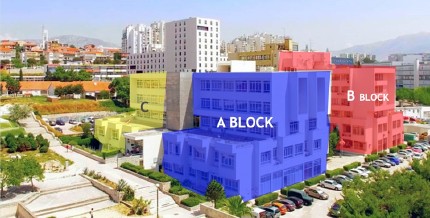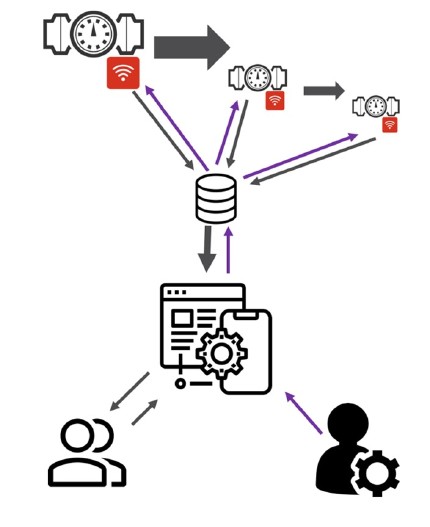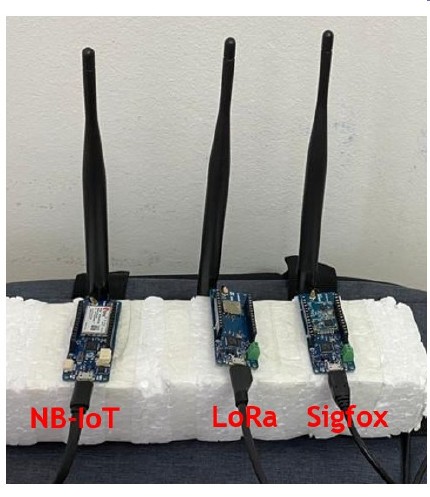Real time monitoring of water consumption in Split
PILOT LOCATION: Split, University of Split, Faculty of Civil engineering, Architecture and Geodesy
PILOT PARTNER: Water Utility and Sewerage Company Split/VIK-Split
FUA PILOTING PARTNER: RERA
ABOUT THE PILOT
The pilot action aims at implementing the real-time water consumption at three different entry points in a public building using wireless technology. The selected location is the University of split, Faculty of Civil engineering, Architecture and Geodesy. The faculty building consists of three blocks: A- and B-Blocks contain lecture and measurement rooms, while C-Block only classrooms. Smart water metering should be able to register different daily water consumption as well as seasonal fluctuations. The monitored data will be available on dashboards (LCD screen) in a public space of the building as well on mobile applications. Faculty students and employees will be able to download the data and analyse it in order to achieve a higher water efficiency in the building.

Location of pilot implementation (A-, B- and C-Blocks) at the University of Split, Faculty of Civil Engineering, Architecture and Geodesy
For this purpose, three different, low-power state-of-the-art IoT radio technologies have been selected for testing. The pilot activities will include:
1. Testing the performances of three IoT radio technologies (LoRa, NB-IoT and Sigfox) for a given specific location and choose the best technology;
2. Installing 3 smart water metres at the 3 locations (A-, B- and C-Blocks), which will monitor different location consumptions and analyse data separately;
3. Developing a dashboard-based web application presenting data at the faculty building, with the mobile version given two roles: one for standard users who will monitor data, and the other for administrators who will monitor/change sampling periods and receive notifications, if consumption is not in the expected normal range.
Since the smart water metres will be installed underground, radio signal propagation (wireless communication) will be tested at each location prior to pilot implementation.

Application architecture
To test availability of the three IoT radio technologies, initial setup to test both software and hardware systems was established. Hardware setup comprises three Arduinos equipped with the three IoT radio technologies (LoRa, NB-IoT, Sigfox). To check if given radios are transmitting, Software Defined Radio (SDR) tool was used to listen to the radio channel between Arduino’s radio and the particular receiver. It is worth noting that NB-IoT and Sigfox are dependent on a service provider infrastructure, whereas LoRa can be expanded with additional gateway(s) if required (i.e. LoRaWAN).

Hardware setup
Preliminary testing of the 3 radio technologies has shown that only LoRa (i.e. LoRaWAN) offered a reliable coverage among the 3 tested IoT. Based on that, three LoRaWAN smart water metres were installed at the 3 building blocks to remotely monitor water consumption. In A-Block, a DN50 Axioma LoRaWAN water metre was installed, while in B- and C-Blocks DN40 Axioma LoRaWAN were installed. The positions of the smart water metres are shown in Figure 4, where the numbers 1, 3, and 2 denote the exact locations in Blocks A, B and C, respectively.
IMPACTS
The expected impacts from the implementation of IoT tools to measure water consumption and use will be an increase in awareness for rational water use and water conservation, combined with potential water saving effects. The educational effect will be also shared by the faculty students and staff through continuous monitoring and application updates.
Report of peer review visit in Split
CONTACT
Water Utility and Sewerage Company Split/ VIK-Split, Boris Bulović, boris.bulovic@vik-split.hr
University of Split, Faculty of Civil Engineering, Architecture and Geodesy, Ivo Andrić, ivo.andric@gradst.hr
Waveform j.d.o.o., Petar Solić, petar@waveform.hr
